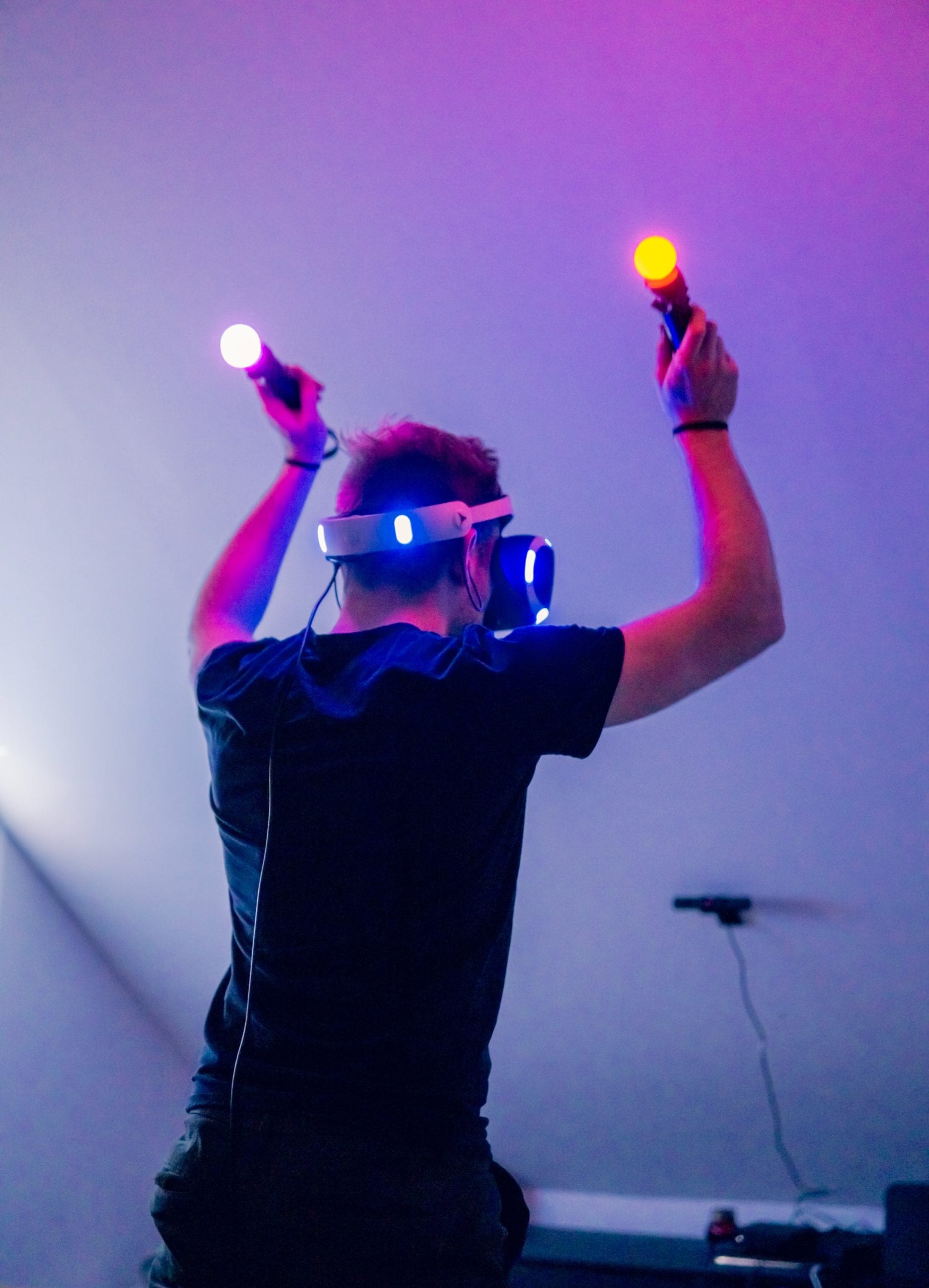
How VR Is Impacting The Fitness World
natasha@syntech.co.za2020-10-13T15:26:26+02:00How VR Is Impacting The Fitness World
By Zach Kyle
The virtual reality fitness wave is coming.
Dozens of fitness games are already available in online game markets and app stores, each striving to make getting off of your couch and working up a sweat more fun than a jog or the gym. More fun means more workouts, which means fewer broken New Year’s resolutions and fewer inches on waistlines. What’s not to like?
That may sound too good to be true, but research says VR can play those kinds of healthy mind tricks. That’s why serious medical researchers are turning to VR for a litany of therapeutic uses, including treating Post Traumatic Stress, maintaining mental acuity for seniors and managing pain for burn victims. Reading that analysis was exactly why the founders of Black Box VR went all in on developing what would be the first VR fitness game built around resistance training rather than aerobics.
“We all know that athletes have this magic that they can push through the pain, the adversity, to make it to the next level,” Black Box VR cofounder Preston Lewis says. “They have this mental grit. When you work out in VR, 80 percent of your brain is dedicated to visual pathways. If the stimulus is strong enough, it’s easier to override that sense of pain.”
The active nature of virtual reality means that any VR game — not just fitness games — offer some exercise value. San Francisco State University’s Kinesiology Department launched the VR Health Institute, which is developing methods to test and rate games based on how many calories players burn in a session.

Aaron Stanton, a Silicon Valley angel investor and startup advisor with a focus on virtual and augmented reality, is involved with the VR Health Institute. He says players in the fitness industry will soon engage in an arms race for VR fitness market share.
“In five years, there won’t be a gym in the U.S. that doesn’t have some component of virtual or augmented reality,” Stanton says.
Dozens of aerobic-based virtual reality fitness games are already available on virtual reality platforms such as the HTC Vive and Oculus Rift. Players use wands or gloves to execute calorie-burning actions, such as throwing punches, swinging swords or firing a bow in a variety of games.
But no game on the market replicates a weightlifting workout. Black Box VR hopes to change that.
The company plans to open its own boutique gyms, starting this year with a pilot gym in San Francisco. Users will step into a personal room — a black box — where they will put on an HTC Vive VR headset and calibrate the various cable machines to their height and strength. The system will remember the user’s workout history and calibrate the various exercises to provide the appropriate resistance, which will gradually increase with the user’s fitness. An in-game trainer will coach the player through exercise techniques to ensure effectiveness and safety. If a player completes only, say, six of 12 reps, the resulting attack won’t be as strong.
The idea, Lewis says, is that users level up in their game as they level up their bodies, creating a gratifying feedback loop that rewards their effort.
“If you level up your slash attack, you get that dopamine hit that helps you come back to the gym motivated,” he says. “The next time you come back to the gym, you’re no longer Level 5. You are Level 6, and you are actually lifting heavier weight and doing more damage in the game.”
Zach Kyle works at Crucial as a content author. He previously worked for 10 years as a reporter at several newspapers. He enjoys tacos, yard games and The Witcher 3.
The opinions expressed in these articles are those of the individual authors and not Micron Technology, Inc., its subsidiaries or affiliates. Upgrading your systems and components can cause damage to the system or components, including potential data loss. Micron is not responsible for any damage or harm, including data loss or system interruptions, that may occur. All information is provided “AS-IS” and neither Micron nor the author make any representations or warranties with respect to the information provided. Neither Crucial nor Micron Technology, Inc. is responsible for omissions or errors in typography or photography. Micron products are warranted as provided for in the products when sold, applicable data sheets or specifications. Information, products, and/or specifications are subject to change without notice. Micron, the Micron logo, Crucial, and the Crucial logo are trademarks or registered trademarks of Micron Technology, Inc. Any names or trademarks of third parties are owned by those parties and any references herein do not imply any endorsement, sponsorship or affiliation with these parties.












